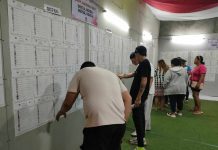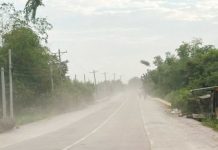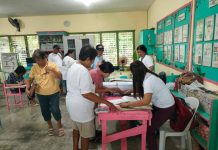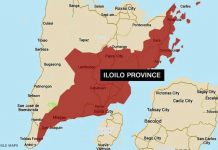[av_one_full first min_height=” vertical_alignment=” space=” custom_margin=” margin=’0px’ padding=’0px’ border=” border_color=” radius=’0px’ background_color=” src=” background_position=’top left’ background_repeat=’no-repeat’ animation=”]
[av_heading heading=’HIV infection ‘not a gay disease’’ tag=’h3′ style=’blockquote modern-quote’ size=” subheading_active=’subheading_below’ subheading_size=’15’ padding=’10’ color=” custom_font=”]
BY JONEL AMIO
[/av_heading]
[av_textblock size=” font_color=” color=”]
Sunday, July 2, 2017
[/av_textblock]
[av_textblock size=” font_color=” color=”]
ILOILO City – Stigma is the biggest challenge in encouraging people to get tested for HIV infection, a campaigner on HIV and AIDS information said.
The misconception that the human immunodeficiency virus is a “gay disease” turns people off, according to Roberto Palma Jr., an HIV coordinator for the Family Planning Organization of the Philippines (FPOP).
“If people continue to think that [HIV] is a gay disease, the general public — despite engaging in risky sexual behavior — will not get tested,” said Palma, a trained HIV counselor.
The stigma makes anyone, whether heterosexual or gay, “too afraid to be associated with being gay or promiscuous,” he said.
In 2016, there were 55,000 to 60,000 people presumed to be living with HIV and/or AIDS across the Philippines but only 39,000 were diagnosed, Palma told this reporter, citing statistics from an “HIV, AIDS epidemic modeling.”
“The problem is when one sector is stigmatized, the other sectors will no longer bother,” Palma lamented. “The message we want to put out is HIV and AIDS are everybody’s concern.”
A total of 629 people in the country tested positive for human immunodeficiency virus (HIV) in April, a report from the Department of Health’s Epidemiology Bureau showed.
Most of the new cases were from the National Capital Region (234, or 37 percent of the total number), based on data from the HIV, AIDS and Antiretroviral Therapy Registry of the Philippines (HARP).
Region 6 (Western Visayas) ranked fifth among regions with the most number of new cases in April (25, or 4 percent of the total new cases). Region 4A (Calabarzon) followed with 109 cases; Region 7 (Central Visayas), 71; and Region 3 (Central Luzon), 56.
In March, Western Visayas had 59 new cases.
From January to March this year, there were a total of 144 new cases of HIV infection. In the same timeframe, one person tests positive for HIV every 13 hours, Health department data showed.
In a way, the continuous detection of HIV infections is a good thing, according to Palma.
This means “(HIV) testing services are now reaching the people,” he said.
Palma attributed this to the “investment” in training people to become counselors and peer educators, capacitating hospitals with HIV and AIDS treatment hubs, and better access to these health amenities.
Aside from getting regularly tested, Palma said the public should also avoid “condomless sex.”
The World Health Organization and the United States’ Centers for Disease Control and Prevention insist using this term instead of “unprotected sex,” which may be subject to different interpretations, Palma said.
With the use of condom, sex is “risk-free” 97 to 98 percent of the time. Using lubrication is also encouraged to prevent wounds, he said.
“Once a year is enough,” Palma said of the frequency of getting tested for HIV. “But if you’re sexually active, you should get tested every three months.”
Counseling is provided before and after someone gets tested for HIV. It is aimed at providing vital information regarding the test itself and the results, he said./PN
[/av_textblock]
[/av_one_full]







